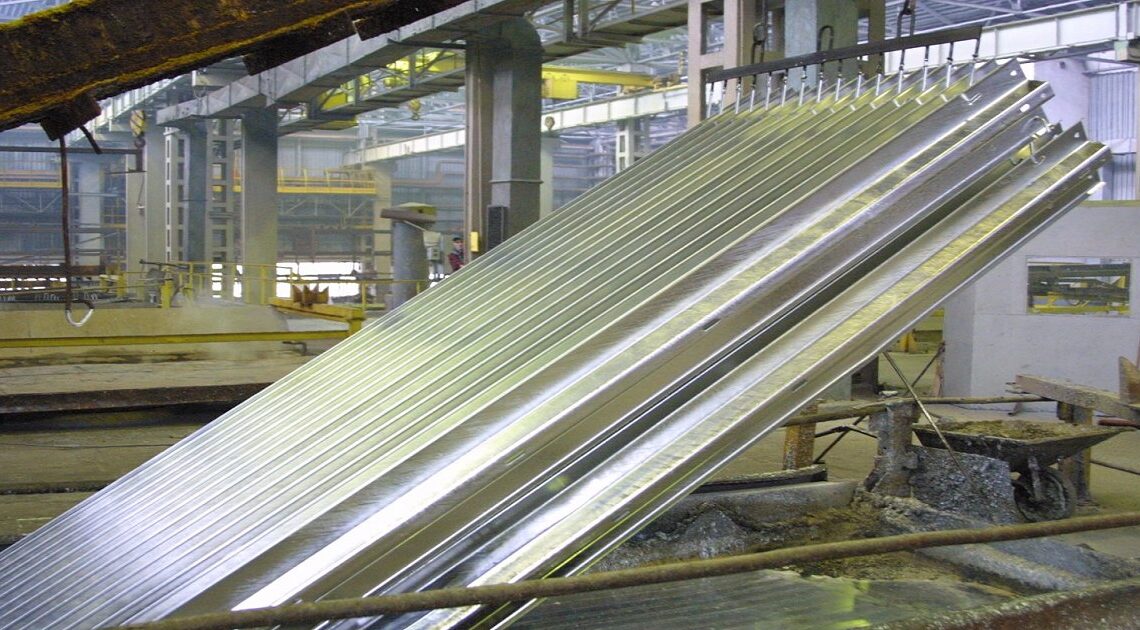Galvanization and Hot Dip Galvanizing are a well-known techniques used to safeguard iron and steel from rust. These processes involve securing an iron surface with layers zinc that creates an extremely strong shield against environmental elements that could cause corrosion and rust. Although Galvanization and Hot Dip Galvanizing methods are mostly designed to preserve the quality of metal objects, they also have an important impact on the natural environment in Pakistan.
The article we’ll look at the environmental impacts of galvanization and hot-dip galvanizing processes in Pakistan. We will explore the ways these processes contribute to the sustainability of our environment and what advantages they can bring to the country.
Understanding Galvanization and Hot-Dip:
Before diving into their environmental impacts we should first know what hot-dip galvanizing and galvanizing are.
Galvanization It is the procedure where iron or steel objects are coated by a coating of zinc by electroplating or hot-dip. The zinc coating acts as a sacrificial shield that corrodes the metal underneath.
Hot-Dip galvanizing:
Galvanizing that is hot-dip is one of the forms of galvanization. It involves submerging the metal in the bath of molten zinc. This produces a stronger as well as more long-lasting zinc layer as compared against other ways.
The environmental impacts of Galvanization:
Positive Aspects:
Hot-dip galvanizing and galvanizing are both hot-dip processes that provide numerous environmental advantages in Pakistan:
Corrosion Prevention by extending the life of steel structures and components Galvanization can reduce the need for regular replacements and conserves resources.
energy efficiency: Energy required to make zinc coatings is typically lower than the energy required to manufacture alternatives such as epoxy coatings or paints.
Low Maintenance: Galvanized products generally require less painting and maintenance and reduce the use of chemicals and their environmental impact.
Negative Aspects:
But, it’s crucial to acknowledge the negative aspects:
Zinc Runoff Zinc runoff that is emitted from galvanized surfaces could impact aquatic ecosystems if they are not appropriately managed.
Depletion of resources: Zinc is an limited resource and its galvanization uses raises questions about its future supply.
Hot-Dip Galvanizing: A Sustainable Choice:
Hot-dip galvanizing in particular is thought to be a long-lasting option due to its long-lasting nature and lower maintenance needs. It makes sure that the steel structure in Pakistan remain free of corrosion for many years and reduces the environmental burden that comes with regular repair and replacement.
Case Study Galvanization in Pakistan:
To show the environmental impact more clearly we will examine the case study on galvanizations in Pakistan. The extensive utilization of galvanized metals in infrastructure and construction projects is a significant factor in the long-term durability of the structures. This helps to reduce the environmental impact of repair and replacements.
Conclusion:
In conclusion, galvanization as well as hot-dip galvanizing can have an impact positive on the environment of Pakistan. These processes can extend the life of iron and steel products, cut down on maintenance and increase efficiency in energy use. While there are some concerns but proper management can help mitigate any negative consequences.
FAQs:
What’s the distinction between hot-dip galvanizing and galvanizing?
Galvanization is the process of covering the metal with zinc to stop corrosion. Hot-dip galvanizing is an exclusive method of galvanization which involves submerging the metal in hot zinc to form a stronger as well as more long-lasting coating.
What is the benefit of galvanization to environmental protection in Pakistan?
Galvanization helps our environment and the natural world of Pakistan by prolonging the life of metal products, decreasing the requirement for regular replacements, preserving resources and increasing energy efficiency.
Is there any disadvantages when using galvanized products?
A potential downside is the evaporation of zinc from galvanized surfaces. This can affect ecosystems in the water if not handled correctly. In addition, there are worries about the loss of zinc as it is a finite resource.
Hot-dip galvanizing really the most sustainable solution for protection against corrosion?
Hot-dip galvanizing is regarded as green due to its long-lasting nature and lower maintenance demands. However, the decision to choose depends on the specific application and environmental factors.
Are there alternatives to galvanization in terms of environmental protection?
Alternatives to galvanization may include other coatings, such as epoxy or paint, but they may have different environmental impact and might not offer the same level in protection from corrosion. The decision to choose should be according to the particular requirements of the project as well as environmental factors.



